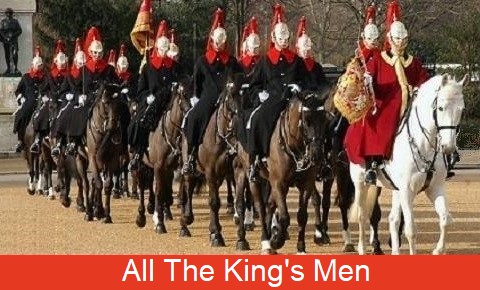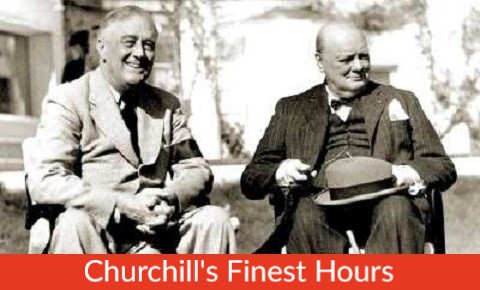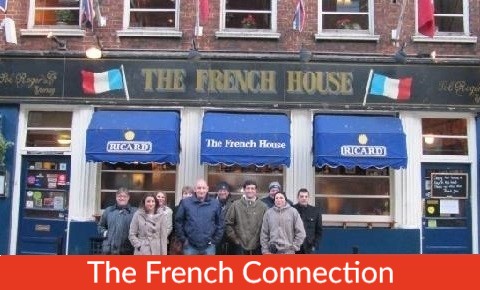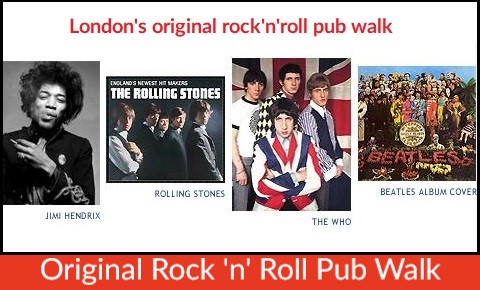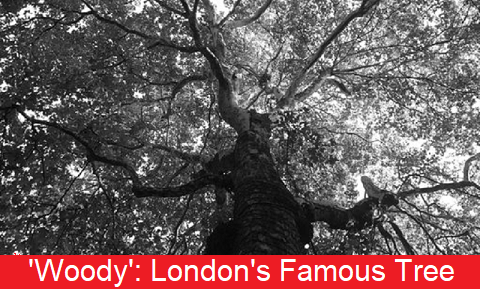
PRIVATE LONDON WALKS – PRACTICAL INFO
● Private guided London walk.
● Officially accredited Blue Badge London guide.
● Mon to Sun. Start 10am. 2 to 3 hours duration.
● Meet at any pre-arranged central London place.
● Price for 1 to 10 persons: £260.00.
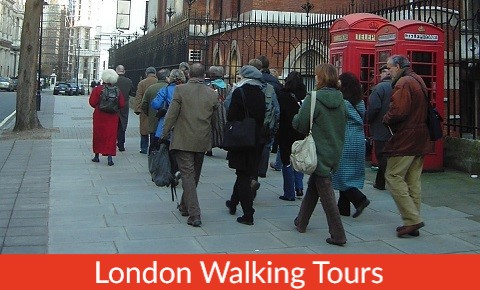
‘ALL THE KINGS’ WOMEN’ WALK – a story of Royal WAGs, sovereigns, sex & scandal.
This walk is a jaunt around St James’s, the area of central London close to the royal palaces. It is synonymous with royal carry-ons, and explores the lives of concubines, courtesans and call-girls as they serviced the sauciest sovereigns’ sceptres, in particular, Charles II, George IV and Edward VII. Throughout history, royal marriages were outward displays of a fairy-tale romance: ‘And they lived happily ever after’. In truth, most were a sham. They were used to form alliances, cement power and create dynasties. The female was merely a diplomatic playing card, with the odds heavily stacked in the male’s favour: it was the husband who inherited the wife’s wealth. Love and affection? Forget it! Kings were positively encouraged in taking mistresses, some of whom became so powerful they were treated almost like a queen. A mistress was expected to: 1) Sleep with the king on demand, and often his friends; 2) Sustain the royal spirit; 3) Help plot against political enemies. Nell Gywn, Mrs Fitzherbert and Lillie Langtree are three of the most famous women who ‘looked after the Crown Jewels’ and are featured on this walk. Not recommended for children.
‘ALL THE KING’S MEN’ WALK* – Present… arms! A royal walk with Changing of the Guard.
This is a walk around St James’s, the area synonymous with royalty, and features the Changing of the Guard at Buckingham Palace as its central theme. First, a ‘nosey mosey’ around St James’s, the area synonymous with royalty with a number of palaces and aristocratic houses. For example, Spencer House, Princess Diana’s ancestral family home. Then we get as close as security will allow us to Clarence House, official residence of King Charles. Next, St James’s Palace, nearly 500 years old, and still the official royal residence. Then we enter the processional route known as The Mall, aka Royal High Street! There’s a refreshment break in Royal St James’s Park, as we wait for the marching bands to strike up and begin the splendid Changing of the Guard ceremony. All the King’s horses and all the King’s men in the kind of pomp that only London does best. Your guide will explain this centuries-old tradition, run through the regiments that take part, regale you with regal tales, and, as the military band marches by, bag you the best spot for photos of this popular pageant of colour.
● Start time: 10am. Usually takes place on Monday, Wednesday and Friday between August and May and daily during June and July. It does not take place at all during wet weather. If the ceremony is cancelled on the tour date, an alternative guided walk of the royal quarter will be substituted.
‘CHURCHILL’S FINEST HOURS’ WALK – Examining one of history’s most fascinating figures.
This walk through the capital’s corridors of power examines the destiny and defiance of one of the great names of history: Winston Spencer Churchill was recently voted greatest Briton of all time. His life-span stretches from Bismarck to the Beatles. He had a great historical impact, not just with his leadership during World War II, but right across the 20th century. Recently, there has been a flurry of movies dedicated to the great man, including the award-winning blockbuster The Darkest Hour. One of the first stops looks at Churchill’s relationship with the USA. Churchill did more than any other to forge Britain’s political ties across the Atlantic. In fact, although his father was English, his mother was American. The writer Mark Twain said: ‘that makes him the perfect man.’ We find out that he seriously misjudged some policies: Dardanelles, India, the abdication of Edward VIII, for example. But we also reflect that his faults were outweighed by achievements, in particular his political plate-spinning. At Westminster we discuss his ultimate legacy: some might argue world peace, others warmongering. Regardless, he remains eminently quotable, one of his most relevant lines being: ‘History will be kind to me, for I intend to write it.’
‘FRENCH CONNECTION’ WALK – The capital’s Gallic flavours in true esprit d‘Entente.
This walk examines the French influence on London, British politics, and the British monarchy. London is the seventh largest French conurbation in the world with a French-speaking population of over 300,000. French is also spoken by a sizeable proportion of the UK’s population, the most popular foreign language. And did you know the name Great Britain stems directly from the need to distinguish it from French Britanny? Of course, Britain and France are neighbours – and like neighbours sometimes they argue, sometimes they try to out-do each other, but in times of trouble they often help each other out. The London HQ of Charles de Gaulle is visited to demonstrate the stresses and strains of this relationship during World War II. The walk then takes a turn through the capital’s corridors of power, established under French sway after 1066. The British aristocracy is, we find out, originally descended from Norman blood. The London obsession with French cuisine is discussed using one of the capital’s most renowned restaurants as an example. Plenty of other French connections come into play.
GHOSTS OF SWINGING LONDON
- The original London Rock ‘n’ Roll Pub Walk.
- As featured in the book Soul City Wandering by Frank Molloy. Available from Amazon and Waterstones.
- Promoted as official event of Open House London 2020.
- Recommended by the Sunday Times.
From Tin Pan Alley to Carnaby Street, this walk is an upbeat hop around select central London sites which have witnessed some of the most seminal moments of the 1960s, the swinging decade that defined popular music. The Beatles, the Rolling Stones, the Who, the Kinks, the Small Faces. For all these bands and many others, the battleground was London, and Soho was London’s beating heart. Now, almost all the old venues are gone, the recording studios have closed down, and much of Soho has been redeveloped, gentrified and homogenized. But it’s still haunted by its past. So, let’s go hunting for ghosts…
Featuring, for one night only… The pub that barred the Rolling Stones. The pub that saw The Who’s Keith Moon raise hell. The pub that saw the first electric guitar performance in London. Plus, stories of sex, drugs and rock & roll, and little-known connections including: the place where the Beatles first performed in London, and the pub where Jimi Hendrix last performed live. Plus, loads of other legendary tales.
● Note: It is not necessarily a requirement to physically enter any of the establishments concerned, nor indeed, to drink alcohol. This tour supports the UK Government’s Responsible Drinking Campaign. Not recommended for children.
‘SHAKESPEARE’S LONDON’ WALK – In the footsteps of the Great Bard.
This walk follows in the footsteps of the great bard through the city of London, taking one of his greatest plays, Macbeth, as a background theme. We start in the northern part of the city where Shakespeare settled with a London merchant family. Then we make our way south through the city, examining Shakespeare connections on the way, and using almost certainly the same route the bard himself would have taken as he made his way to his main place of work on the south side of the river. Next, through Southwark, which had a reputation for low-living, with taverns, gambling, entertainment, brothels, and the location of countless smelly industries. Some parts have remained untouched since Shakespeare’s time. Finally, we reach Bankside where Shakespeare worked at his beloved Globe Theatre. En route, we will uncover a whole host of fascinating talking points, including links to some of other great writers in the English language, the stinky old alleyway that helped to endow America’s foremost university, London’s last galleried coaching inn and London’s oldest Gothic church, all of which have Shakespeare connections.
SOUL CITY WALKIN’ – Events, institutions and individuals behind the City’s history.
Today, the City of London is regarded as the belly of banking, the heart of insurance, the nerve-centre of trading. In short, the business capital of the world. But if we dig a little deeper, we will find ancient street names evoking old trading roots which can lead us on a fantastic soulful journey through the world’s financial torso. There are some strong literary links. Indeed the novelist Charlotte Bronte declared: ‘In the West End you may be amused, but in the City you are deeply excited.’ The wide variety in architectural style reveals the City has suffered its share of adversities. However, like the song says, ‘From the ashes of disaster grow the roses of success’, and the City developed a remarkable phoenix-like tendency to regenerate itself. Thus, we find Roman remains alongside the latest high-tech skyscrapers, and Wren churches defiantly preaching from all corners. Discover the story of the Great Fire of London, how cockneys got their name, and the Princess Pocahontas connection. Plus, the legends behind the Wall of Sacrifice, the men who saved Shakespeare from oblivion, and the site of London’s most notorious prison.
‘TALES FROM THE SOUTH SIDE’ WALK – Stews, brews & magnificent views.
This walk examines beer, books and bad reputations on London’s south side. Southwark was London’s first settlement. In 43AD the Romans established a camp of 40,000 soldiers here to protect the building of a bridge and port at the River Thames. It quickly gained a reputation for low-living, with taverns, gambling, entertainment, brothels, and the location of countless smelly industries. Some parts have remained untouched since Shakespeare’s time. En route, we will uncover a whole host of fascinating talking points, including links to some of the greatest writers in the English language, the stinky old alleyway that helped to endow America’s foremost university, and London’s last galleried coaching inn. As we go further, we will discover the remains of the prison where Charles Dickens father was jailed, inspiring some of the most famous novels in the world. Also, the area that was once one of London’s worst slums, and the American who decided to do something about it. In addition, the story of the world’s biggest brewery, the original Clink prison and the legendary Borough Market.
‘WOODY: LONDON’S FAMOUS TREE’ WALK – Come and meet a venerable citizen of the old City.
‘Woody’ is the nickname of an old plane tree that stands in the ancient churchyard of St Peter Westcheap in the City of London. Recognised as one of the oldest within the old city walls, Woody has been championed as one of the The Great Trees of London. It is a is a true Londoner. Indeed, it is about as ‘Cockney’ as you can get: the defining Bow bells are within deafening distance across the road from where it was planted. The plane’s canopy also spreads over one of the most historic locations in the square mile, with its roots clawing deep into London’s past.
The tree also occupies an extremely valuable piece of real estate. Its immediate environs form the torso of the world’s greatest money market. Yet although soaring to 80ft in height, it stands in the shadow of the architectural battle for space that rages in this financial centre. Despite the inherent threat, the tree’s status is officially protected by a preservation order, which means developers cannot get their hands on the space around it, thus preventing the demolition of the ancient shops immediately below it. This very unusual walk focuses on the ancient tree’s lone battle against the encroaching corporate world. Plus, there’s plenty of rich history and literary aspects, with connections to Shakespeare, Dickens, Keats and many others.
‘2000 YEARS IN 2 HOURS’ WALK – London through the ages.
London. How did it all come about? This walk examines, in chronological order, some of the main historic events in the development of one of the world’s greatest cities. We start at the River Thames with stories of the mysterious Celts before we move onto London’s Roman remains nearby. Next, we look at the Saxon and Viking legacy. The Norman and Plantagenet dynasties take us onto medieval London (note: A short trip by public transport may be necessary to save time). Then, we find the monastery founded for monks to pray for souls of the Black Death. We find the place where the Peasants’ Revolt came to a pointed end. The religious strife of the Reformation is also examined including the legend of Bloody Mary. How did the Great Fire start? We will find out. When was the ‘London mob’ at its most powerful? We will find out. The effect of the Industrial Revolution and the Blitz on London are examined as we make our way to the Millennium Bridge. We have just covered 2,000 of years, yet from here we see aspects of 21st century London through its ever-changing skyline.



